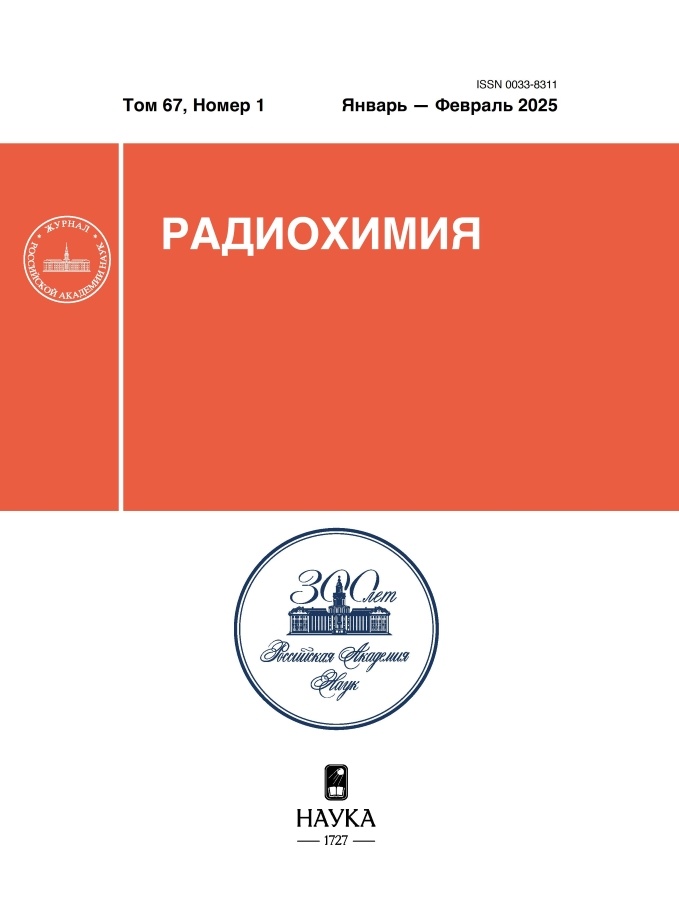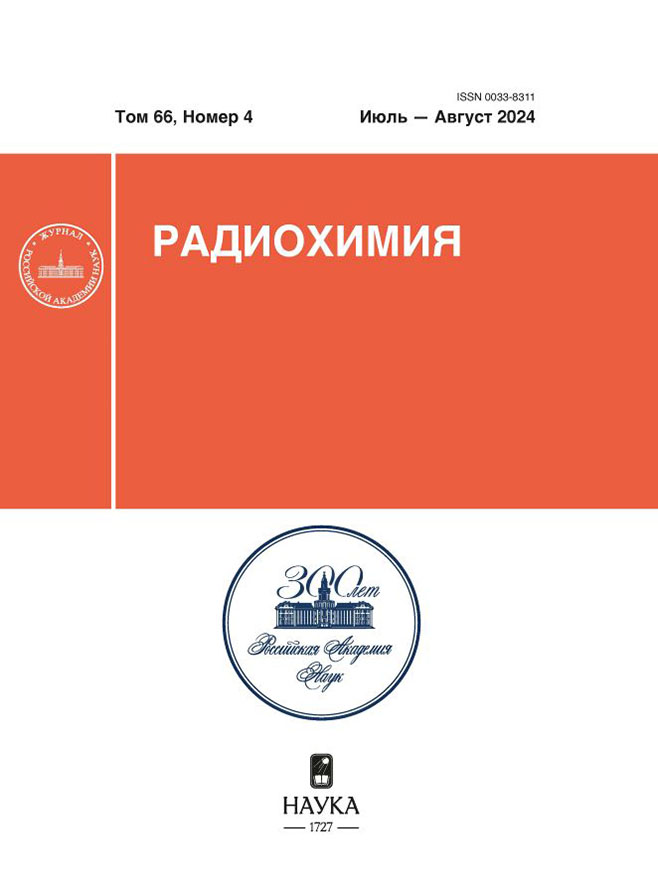Влияние ионизирующего излучения на физико-химические и эксплуатационные свойства дизельного топлива с добавлением толуола
- Авторы: Джаббарова Л.Ю.1, Мустафаев И.И.2, Мирзаева А.С.1, Ибадов Н.А.1
-
Учреждения:
- Институт радиационных проблем Национальной академии наук Азербайджана
- Азербайджанский университет архитектуры и строительства
- Выпуск: Том 66, № 4 (2024)
- Страницы: 379-387
- Раздел: Статьи
- URL: https://ruspoj.com/0033-8311/article/view/686228
- DOI: https://doi.org/10.31857/S0033831124040109
- ID: 686228
Цитировать
Полный текст
Аннотация
Исследована радиолитическая устойчивость дизельного топлива (ДТ) с добавлением различных количеств толуола. Эксперименты проводили достаточно длительное время для изучения процессов постполимеризации. Кинетику процессов при облучении чистого ДТ изучали при температуре Т = 20°С, мощности дозы Р = 0.07 Гр/с в интервалах поглощенных доз D = 15–150 кГр, а смесь толуола с ДТ облучали в пределах поглощенных доз D = 24–90 кГр при концентрации толуола 1, 3 и 5 об%. Проведен газохромато-масс-спектрометрический (ГХ/МС) анализ, определены плотности, вязкости и иодные числа ДТ до и после облучения при различных поглощенных дозах. Кинетика постполимеризационных процессов после окончания облучения показывает, что скорость процесса и его доля в общей полимеризации зависят от времени облучения, плотности исходной смеси и дозы. Путем добавления присадок (антирадов) можно подобрать состав дизельного топлива, который будет лучше противостоять радиационному воздействию. Необходимо найти оптимальную концентрацию толуола в составе дизельного топлива, при которой вязкость и плотность не изменятся с увеличением поглощенной дозы.
Ключевые слова
Полный текст
Об авторах
Л. Ю. Джаббарова
Институт радиационных проблем Национальной академии наук Азербайджана
Автор, ответственный за переписку.
Email: clala@mail.ru
Азербайджан, AZ1143, Баку, ул. Ф. Агаева, д. 9
И. И. Мустафаев
Азербайджанский университет архитектуры и строительства
Email: clala@mail.ru
Азербайджан, AZ1143, г. Баку, ул. Ф. Агаева, д. 9
А. С. Мирзаева
Институт радиационных проблем Национальной академии наук Азербайджана
Email: clala@mail.ru
Азербайджан, AZ1143, Баку, ул. Ф. Агаева, д. 9
Н. А. Ибадов
Институт радиационных проблем Национальной академии наук Азербайджана
Email: clala@mail.ru
Азербайджан, AZ1143, Баку, ул. Ф. Агаева, д. 9
Список литературы
- Джаббарова Л.Ю., Мустафаев И.И., Ибадов Н.А. // ЖПС. 2022. Т. 89. № 3. С. 315–322.
- Jabbarova L.Y., Mustafayev I.I., Akperov R.Y., Mirzayeva A.S. // J. Radiat. Res. 2022. Vol. 9. N 1. P. 58–63.
- Jabbarova L.Y., Mustafayev I.I. // Radiochemistry. 2021. Vol. 63. N 3. P. 373.
- Jabbarova L.Y., Mustafayev I.I. // High Energy Chem. 2021. Vol. 55. P. 37.
- Джаббарова Л.Ю., Мустафаев И.И. // ЖПС. 2018. Т. 85. № 4. C. 634.
- Jabbarova L.Y., Mustafayev I.I. // J. Energy, Environ. Chem. Eng. USA. 2017. vol. 2. № 4. P. 41.
- Джаббарова Л.Ю., Мустафаев И.И., Meликова С.З. // Междунар. журн. прикл. и фундам. исслед. 2017. №7 (2). C. 239.
- Jabbarova L.Y., Ibadov N.A., Mustafayev I.I., Mirzayeva A.S. // ІV Int. Scientific and Practical Conf. “Science and Technologies.” Kazakhstan, 2022. P. 135–139.
- Ezeldin M., Younis F., Elamin A.A., Suliman Y.S., Sheshko T.F., Abdallah N.E., Cherednichenko A.G. // J. Mex. Chem. Soc. 2021. Vol. 15. P. 31.
- Ezeldin M., Ishak C.Y., Eljack M.. Milad M. // Chem. Methodol. 2018. Vol. 3. P. 64–74.
- Ezeldin M., Masaad A.M., Abualreish M.J.A., Ishak C.Y. // Orient. J. Chem. 2017. Vol. 33. P. 2085–2089.
- Филатов И.Е., Первова М.Г. // Горение и плазмохимия. 2011. T. 9. № 3. C. 227.
- Пономарев А.В., Холодкова Е.М., Ершов Б.Г. // Радиац. физика и химия. 2012. Т. 81. № 9. С. 1440.
- Zannis T.C., Hountalas D.T., Papagiannakis R.G. // Energy Fuels. 2007. Vol. 21. P. 2642–2654.
- Luana D.S., Andrade W.A.P., Ivone C.С., Celina M.S. // Radiat. Phys. Chem. 2015. Vol. 115. P. 196–201.
- Osman M.E., Sheshko T.F., Dipheko T.D., Abdallah N.E., Hassan Ishak E.A. // Int. J. Green Energy. 2021. Vol. 18. P. 1396–1404.
- Yasin M.H.M., Mamat R., Yusop A.F., Rahim R., Aziz A., Shah L.A. // Procedia Eng. 2013. Vol. 53. P. 701–706.
- Zaykin Y.A., Zaykina R.F., Silverman J. // Radiat. Phys. Chem. 2004. Vol. 69. № 3. P. 229–238.
- Zaykin Y.A., Zaykina R.F., Mirkin G. // Radiat. Phys. Chem. 2003. Vol. 67. P. 305–309.
- Милинчук В.К., Клиншпонт Э.Р., Тупиков В.И. Основы радиационной стойкости органических материалов. М.: Энергоатомиздат, 1994. 256 c.
- Фельдиак Г. Радиационная химия углеводородов / Пер с англ. А.М. Кабакчи. М.: Энергоатомиздат, 1985. 303 c.
Дополнительные файлы
















